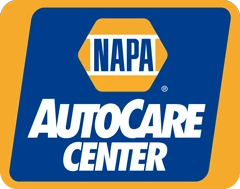The modern world relies heavily on the transportation of goods, and one of the most vital components of this system is the ubiquitous truck. These mammoth vehicles traverse the highways and byways, carrying everything from essential commodities to consumer goods. However, the sheer size and weight of these trucks make them susceptible to accidents, with rollovers being a particularly daunting challenge. In these moments of distress, heavy-duty towing trucks step in as the unsung heroes, rescuing these giants and getting them back on their wheels.
The Anatomy of a Rollover
Rollover accidents involving trucks can occur for a variety of reasons, including driver error, adverse weather conditions, sharp turns taken at high speeds, or abrupt lane changes. The outcome is often a truck that ends up on its side or even upside-down, blocking lanes and causing traffic chaos. These incidents not only disrupt the flow of goods but also pose a significant risk to the safety of other motorists on the road.
Heavy-Duty Towing Trucks to the Rescue
When a rollover occurs, the expertise of heavy-duty towing truck operators becomes invaluable. These specialized vehicles are equipped with the tools, technology, and sheer muscle power required to handle the immense weight of a toppled truck. A heavy-duty towing truck is typically fitted with a sturdy boom and winch capable of hoisting several tons, making it well-suited to uprighting even the largest of commercial vehicles.
The Rescue Operation
The process of rescuing a rollover truck is a meticulously coordinated effort that demands precision and experience. Here’s a step-by-step breakdown of the typical rescue operation:
- Assessment: Upon arriving at the scene, the heavy-duty towing team assesses the situation. They evaluate the stability of the overturned truck, the nature of the terrain, and potential obstacles that may hinder the operation.
- Stabilization: Before attempting to upright the truck, the towing team employs various techniques to stabilize it. This could involve anchoring the truck to prevent further movement or using inflatable airbags to shift its weight distribution.
- Rigging: The heavy-duty towing truck is strategically positioned to ensure maximum lifting capacity. High-strength rigging equipment is then attached to secure points on the overturned truck.
- Uprighting: With the rigging in place, the towing truck’s winch system is engaged, applying controlled force to gradually lift the truck. As it begins to rise, the weight distribution is carefully managed to prevent any sudden shifts.
- Recovery: Once the truck is successfully lifted and back on its wheels, the towing team ensures that it is stable and secure. The road is then cleared of debris, and any spilled cargo is cleaned up.
- Removal: In some cases, a severely damaged truck may need to be loaded onto a flatbed trailer for transportation to a repair facility or salvage yard. Heavy-duty towing trucks are also equipped for this task.
The Heroes Behind the Scenes
The individuals operating heavy-duty towing trucks are unsung heroes who play a critical role in maintaining the flow of commerce and ensuring road safety. Their specialized training, experience, and calm under pressure are what make successful truck rollover rescues possible.
Truck rollovers are unfortunate events that can disrupt the efficiency of our modern transportation systems. However, with the presence of heavy-duty towing trucks and their skilled operators, these incidents can be swiftly and effectively managed. These unsung heroes work diligently to restore order and safety to our roads, reminding us that even in moments of chaos, there are those who can turn the tide and set things right.


